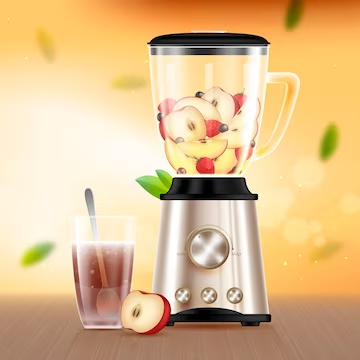From Pulp to Power: Juicers’ History: Without delightful beverage advantages, imagine a world. People squeezed and pressed fruits and vegetables by hand to extract their nutrients. Technology makes healthy drinks simpler to drink. A juicer makes delightful, healthful drinks from whole fruits and vegetables. This book may teach you about juicers. It also explores their history and kinds and how to optimize yours. Learn about this useful kitchen item, whether this is your first juicer or not.
Juicer’ History
Juice has long been consumed. Pestles and mortars filtered the juice. The 1700s saw the first popular juicers. Use your hands to crank fruit machines. Similar to squeezer handles. In the late 19th and early 20th centuries, electric juicers completely changed the industry. The first electric juicers were huge and single-purpose, so they required cautious handling. They were simpler than hand-operated. From 1900 to 1930, mechanized juicers changed everything. Due to motors and blades, these complex systems quickly separated pulp from juice. Masticating juicers and other juice-making processes became popular, giving customers more options.
Information about juicers
Fruit and vegetable juicers must eliminate pulp. The steps vary by juicer: Fast and efficient centrifugal juicers are great. To work, food is shaken against a metal screen. A filter box holds pulp. Center-of-mass force moves juice from tubes. Cold press and masticating juicers need additional care. A single drill screw smashes and squeezes fruit to get maximum juice without burning. Its users think it includes more vitamins and enzymes than spinning juicers.
Pulp and juice pros and cons: pulse strength?
Fruits and vegetables are squeezed into juice using a juicer. Preserve pulp! The drink is fiber-rich. Fiber is full and gut-healthy. Use pulp wisely: Pulp adds nutrition and calories to bread, cakes, and pastries. This nutritious ingredient changes the taste of your favorite soups and stews. The extra pulp may keep your veggie burger moist. Put the pulp in the trash to assist plants. Different juicers are explained:
Because people have different needs, there are several juicers. See other juicers: These little juicers juice oranges, grapefruits, and lemons. The cost is fair. They like how quiet and efficient these costly juicers are. Breaking and grinding with two gears maximize juice. Juice wheatgrass and leafy greens with or without water. Powerful juicers create plenty of juice.
Choose the Best Juicer
With so many juicers, picking the best might be challenging. These essential variables should inform your choice: Prices vary for juicers. Assess your money.
FAQs
Can you drink juice daily? How much?
Daily juice consumption may keep you healthy. Eat modestly and healthily.
Which vegetables should not be juiced?
Bananas and avocados taste best whole, while certain vegetables juice poorly.
How can I get inexpensive juice?
Garden, buy in bulk and use seasonal vegetables to save.
And if I drink too much juice,?
Consuming too much fruit juice might induce carb overload. Not being unfair is key.
Juicing helps adults, but kids?
Fresh juice is healthy for kids. Consult a doctor or nurse for assistance.

